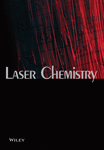Femtosecond Infrared Studies of Chemical Bond Activation
Abstract
The identification of the intermediates observed in bond activation reactions involving organometallic complexes on time scales from femtoseconds to milliseconds has been accomplished through the use of ultrafast infrared spectroscopy. C—H bond activation by the molecule Tp*Rh(CO)2 showed a final activation time of 200 ns in cyclic solvents, indicating a reaction barrier of 8.3 kcal/mol. An important intermediate is the partially dechelated η2-Tp*Rh(CO)(S) solvent complex, which was formed 200 ps after the initial photoexcitation. Si—H bond activation by CpM(CO)3 (M=Mn, Re) showed some product formation in less than 5 ps, indicating that the Si—H activation reaction is barrierless. The activated product was formed on several timescales, from picoseconds to nanoseconds, suggesting that there are different pathways for forming final product which are partitioned by the initial photoexcitation.




